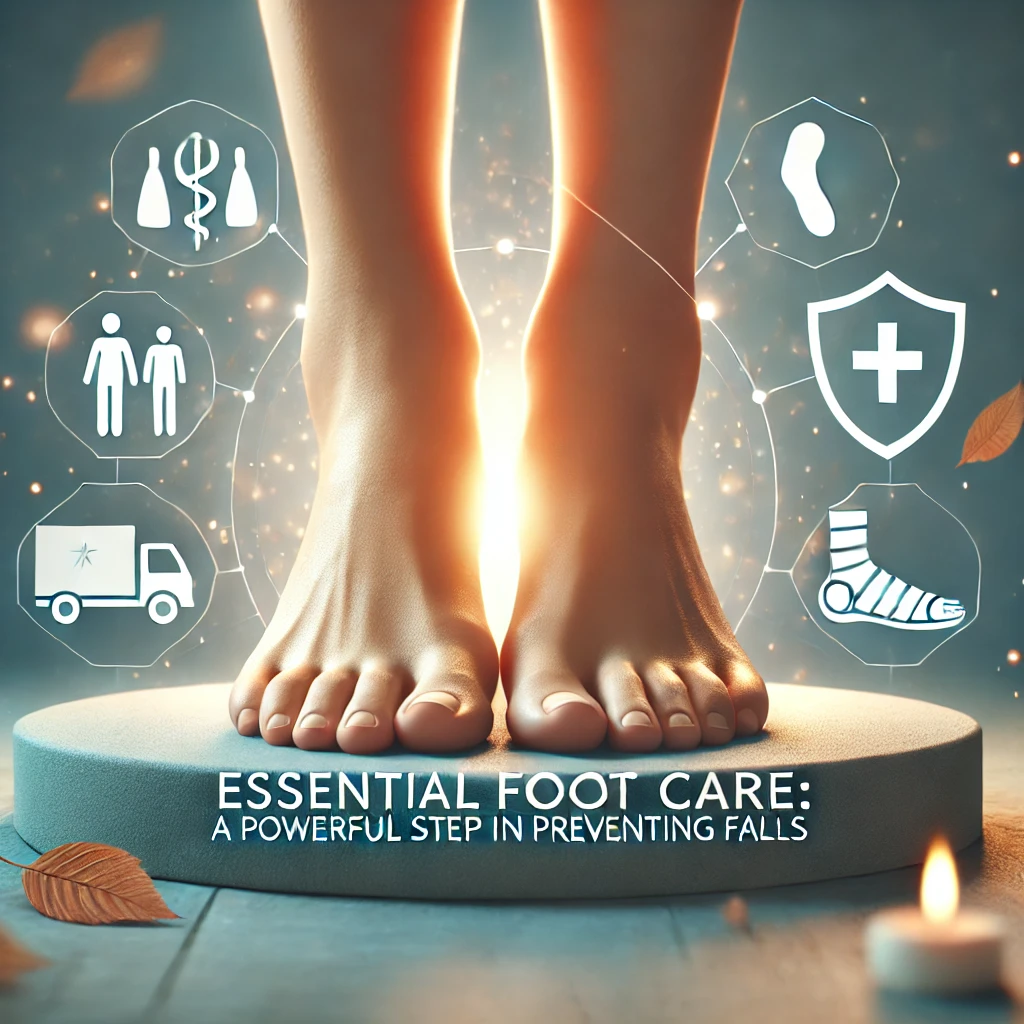Tarsal Tunnel Syndrome (TTS) is a condition that might not be as widely recognized as carpal tunnel syndrome, but it can be just as debilitating for those affected. This comprehensive guide aims to shed light on Tarsal Tunnel Syndrome, offering insights into its causes, symptoms, and the array of solutions available to those suffering from this condition. By understanding Tarsal Tunnel Syndrome more fully, individuals can seek timely intervention and potentially alleviate the discomfort it brings.
Table of Contents
What is Tarsal Tunnel Syndrome?
Tarsal Tunnel Syndrome occurs when the posterior tibial nerve, which runs through the tarsal tunnel on the inner side of the ankle, becomes compressed or squeezed. This tunnel is a narrow space that lies on the inside of the ankle next to the ankle bones, housing nerves, arteries, and tendons. Compression of the nerve in this tunnel can lead to a variety of symptoms, affecting foot function and comfort.

Causes of Tarsal Tunnel Syndrome
Several factors can contribute to the development of Tarsal Tunnel Syndrome, including:
- Anatomical Abnormalities: Variations in foot structure, such as flat feet, can increase strain on the tarsal tunnel, leading to nerve compression.
- Injury or Trauma: Ankle sprains or injuries that cause swelling can compress the nerve.
- Systemic Diseases: Conditions like diabetes or arthritis can lead to swelling, affecting the tarsal tunnel.
- Overuse: Activities that involve repetitive foot movements can exacerbate pressure on the nerve.
- Anatomical Variations: Some individuals have natural variations in their foot anatomy that predispose them to nerve compression, such as a flat foot arch which increases strain on the tarsal tunnel.
- Systemic Diseases: Conditions like diabetes or arthritis can lead to swelling and changes in the tissues around the tarsal tunnel, contributing to nerve compression.
- Trauma or Injury: Direct injury to the ankle, such as fractures, sprains, or impacts, can cause inflammation and swelling, leading to Tarsal Tunnel Syndrome.
- Tumors or Cysts: Benign growths within or adjacent to the tarsal tunnel can exert pressure on the posterior tibial nerve.
- Varicose Veins: Enlarged veins within the tarsal tunnel can compress the nerve due to increased volume and pressure.
- Repetitive Stress: Activities that involve repetitive ankle movements or prolonged standing can exacerbate pressure on the nerve.
- Obesity: Excessive body weight can increase pressure on the foot structures, including the tarsal tunnel, contributing to nerve compression.
- Scar Tissue: Following ankle surgery or injury, scar tissue formation can alter the space within the tarsal tunnel, pressing against the nerve.
- Inflammatory Conditions: Inflammatory diseases like gout or tenosynovitis can cause swelling of the tissues within the tarsal tunnel, leading to nerve compression.
Recognizing the Symptoms
Tarsal Tunnel Syndrome (TTS) lead to a variety of symptoms, affecting foot functionality and comfort. Understanding the full spectrum of symptoms is crucial for early detection and effective management. Here are the symptoms associated with Tarsal Tunnel Syndrome:
Tingling or Numbness
A sensation of pins and needles along the foot, ankle, or sometimes extending to the toes.
Pain
Sharp, shooting pains or a burning sensation in the foot.
Weakness
A feeling of weakness in the foot muscles, affecting foot stability.
Burning Sensations
Beyond tingling, individuals may experience a burning sensation along the nerve’s path, often indicative of nerve irritation or damage.
Electric Shock-like Pains
Some people describe sudden, sharp pains that mimic an electric shock, occurring spontaneously or in response to pressure.
Coldness in the Foot
A feeling of coldness in the affected foot, unrelated to the actual temperature, can be a symptom of Tarsal Tunnel Syndrome due to nerve compression affecting sensory perception.
Weakness in the Foot Muscles
In advanced cases, TTS can lead to muscle weakness, affecting the ability to walk or stand for long periods. This can manifest as difficulty lifting the heel off the ground or a general lack of foot stability.
Swelling
Though less common, swelling around the ankle or sole of the foot may occur, contributing to discomfort and a tight sensation in the affected area.
Altered Sensations on the Sole
Some individuals report changes in how sensations are felt on the bottom of the foot, such as feeling like walking on pebbles, even when barefoot.
Pain that Worsens with Activity
Symptoms of TTS often intensify with physical activities, such as walking or running, and may improve with rest.
Night-time Symptoms
Unlike other conditions, the discomfort and pain from TTS can worsen at night, disturbing sleep.
Diagnosis: The First Step to Relief
Diagnosing Tarsal Tunnel Syndrome involves a thorough examination by a healthcare provider, who may employ several methods:
| Physical Examination: Checking for signs of nerve compression and assessing foot structure. |
| Electromyography (EMG): Measuring the electrical activity of muscles to evaluate nerve function. |
| Imaging Tests: MRI or ultrasound can help visualize the tarsal tunnel and identify any abnormalities. |
Solutions and Management Strategies
Managing Tarsal Tunnel Syndrome (TTS) effectively requires a comprehensive approach tailored to the individual’s symptoms and the underlying cause of their condition. Here’s a detailed exploration of the solutions and management strategies for Tarsal Tunnel Syndrome, aimed at providing relief and improving quality of life for those affected:
Conservative Treatments

Rest and Elevation: Limiting activities that exacerbate Tarsal Tunnel Syndrome symptoms is crucial. Resting and elevating the affected foot can help decrease swelling and reduce pressure on the tarsal tunnel.
Ice Therapy: Applying ice packs to the affected area for 15-20 minutes several times a day can help reduce inflammation and numb the pain. It’s important to wrap the ice pack in a towel to protect the skin.
Orthotic Devices and Supportive Footwear: Custom orthotics designed to support the arch and redistribute pressure away from the tarsal tunnel can be highly effective. Supportive footwear that provides ample room and minimizes compression on the foot is also recommended.
Medications: Over-the-counter NSAIDs, such as ibuprofen or naproxen, can be used to manage pain and reduce inflammation. For more severe pain, a healthcare provider may prescribe stronger medications.
Physical Therapy: A physical therapist can develop a personalized program that includes exercises to strengthen the muscles around the tarsal tunnel, improve flexibility, and enhance foot mechanics. Techniques such as ultrasound therapy, electrical nerve stimulation, and manual therapy may also be employed to reduce symptoms.
Advanced Treatments

Steroid Injections: Corticosteroid injections into the tarsal tunnel area can provide temporary relief from inflammation and pain. However, the effects are not permanent, and repeated injections may be necessary.
Surgery: For cases where conservative treatments have failed to provide relief, or if there is a clear structural issue compressing the nerve, surgical intervention may be considered. Tarsal tunnel release surgery involves cutting the ligament that forms the roof of the tunnel to increase space and relieve pressure on the posterior tibial nerve. The success of surgery depends on various factors, including the cause of TTS and the patient’s overall health.
Lifestyle and Home Remedies
| Weight Management |
| Maintaining a healthy weight can reduce the stress on your feet and alleviate symptoms of TTS. |
| Ergonomic Adjustments |
| For individuals whose activities or work contribute to their symptoms, making ergonomic adjustments can help. This may include using footrests, adjusting the height of chairs, or changing how tasks are performed to reduce strain on the feet. |
| Activity Modification |
| Altering exercise routines to include low-impact activities like swimming or cycling can help maintain fitness without exacerbating Tarsal Tunnel Syndrome symptoms. |
Monitoring and Follow-up
Regular follow-up appointments with a healthcare provider are essential to monitor the progress of treatment and make adjustments as needed. Patients should be encouraged to report any changes in symptoms or new discomforts as these may indicate the need for a different treatment approach.
Embracing a Proactive Approach
Understanding Tarsal Tunnel Syndrome is the first step toward managing its impact on your life. If you suspect you have TTS, seeking professional medical advice early can lead to a more effective management plan. With the right approach, it’s possible to alleviate the symptoms of Tarsal Tunnel Syndrome and improve your quality of life.
Frequently Asked Questions
Q: What exactly is Tarsal Tunnel Syndrome?
A: TTS occurs when the posterior tibial nerve, running through the tarsal tunnel on the inner ankle, becomes compressed, leading to various foot function and comfort issues.
Q: What are the primary causes of TTS?
A: Causes include anatomical abnormalities, injuries, systemic diseases, overuse, and conditions like obesity or inflammatory diseases, all contributing to nerve compression.
Q: How can I recognize TTS?
A: Symptoms range from tingling, numbness, and pain to weakness, swelling, and altered sensations in the foot, often worsening with activity or at night.
Q: What solutions are available for managing TTS?
A: Management strategies include rest, ice therapy, orthotic devices, medications, physical therapy, steroid injections, and possibly surgery for severe cases, alongside lifestyle adjustments for long-term relief.
Conclusion
While Tarsal Tunnel Syndrome presents a challenge, it is not an insurmountable obstacle. Armed with the right information and support, individuals facing TTS can confidently navigate their journey towards alleviating symptoms. Remember, recognizing the signs early and seeking professional advice are crucial steps in effectively managing TTS and ensuring a prompt return to daily activities without discomfort. Embrace a proactive approach to your foot health and step forward into a life free from the pain of Tarsal Tunnel Syndrome.











I would like to consider the ability of thanking you for the professional instruction I have continually enjoyed visiting your site. I’m looking forward to the commencement of my school research and the complete preparing would never have been complete without coming over to your web blog. If I might be of any assistance to others, I’d be pleased to help via what I have discovered from here.